In India, summers are hot and dry with daytime temperatures around 41 °C and nights no lower than 29 °C. That is why local architecture features elements, like courtyards, large overhangs, water bodies, etc., that focus on withstanding heat. In the country’s hot, arid zones, thick, windowless walls are used to keep out the sun’s heat, while courtyards ensure ventilation and fountains provide evaporative cooling to keep interior spaces cool in the hot summers.
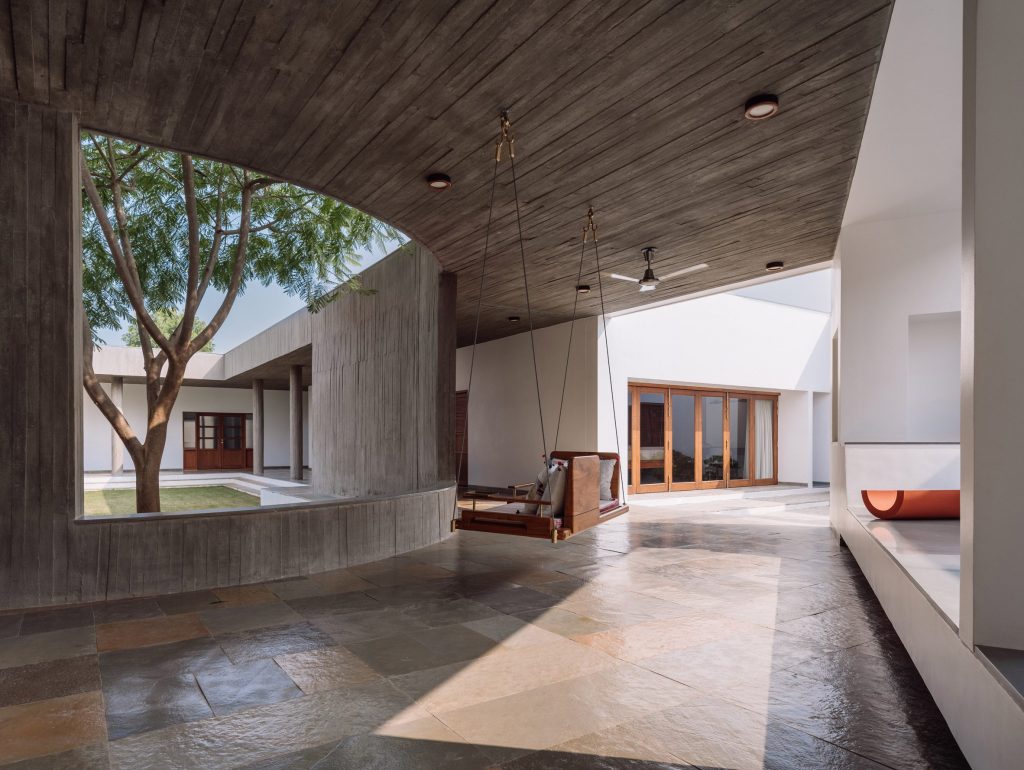
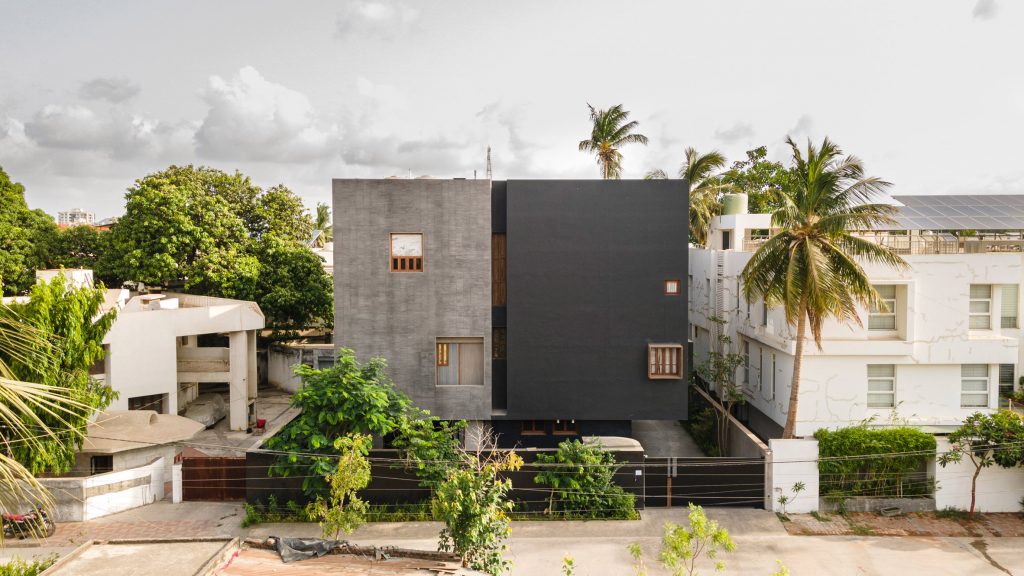
Cool House by Samira Rathod Design Atelier
Aptly named Cool House, a cleverly designed residence has been developed by Indian studio Samira Rathod Design Atelier as a direct response to the context, geography and climate of its site in Bharuch, a city in Gujarat in western India where an extremely hot and arid summer climate prevails. The building was designed as a funnel that channels all of Bharuch’s wind into the house, making it a cool, comfortable haven to live in.
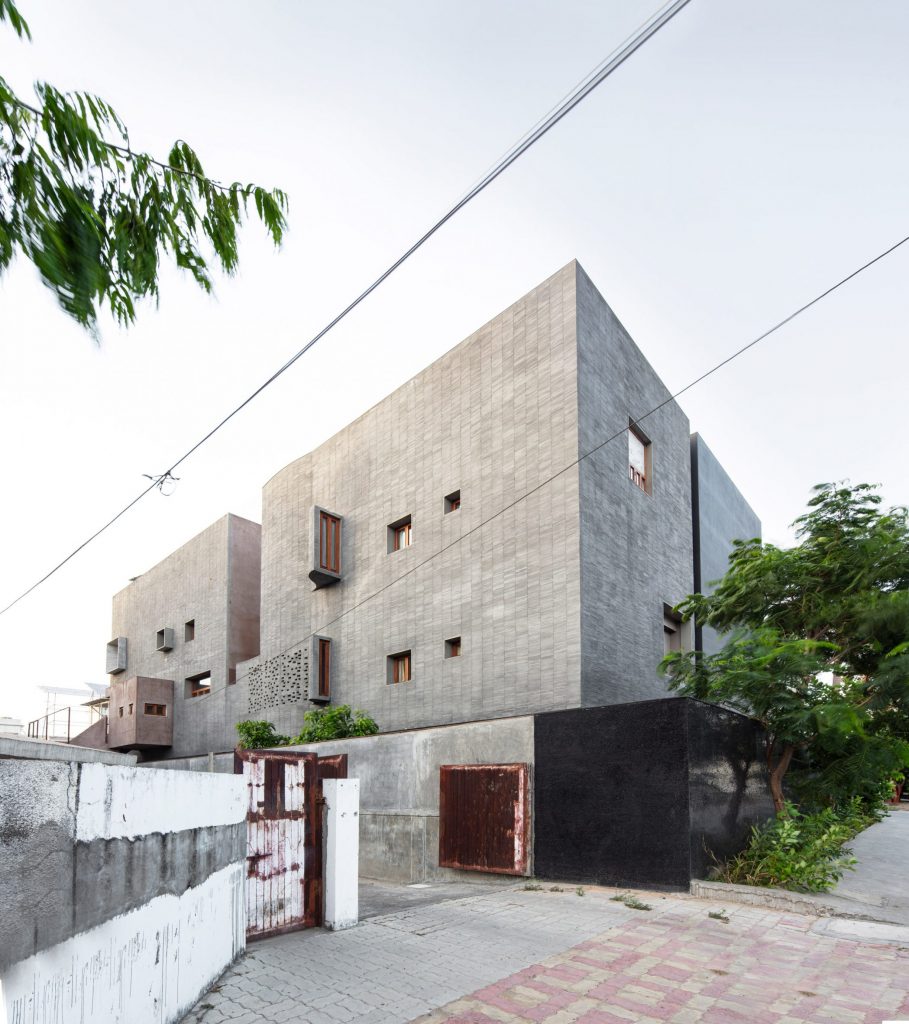
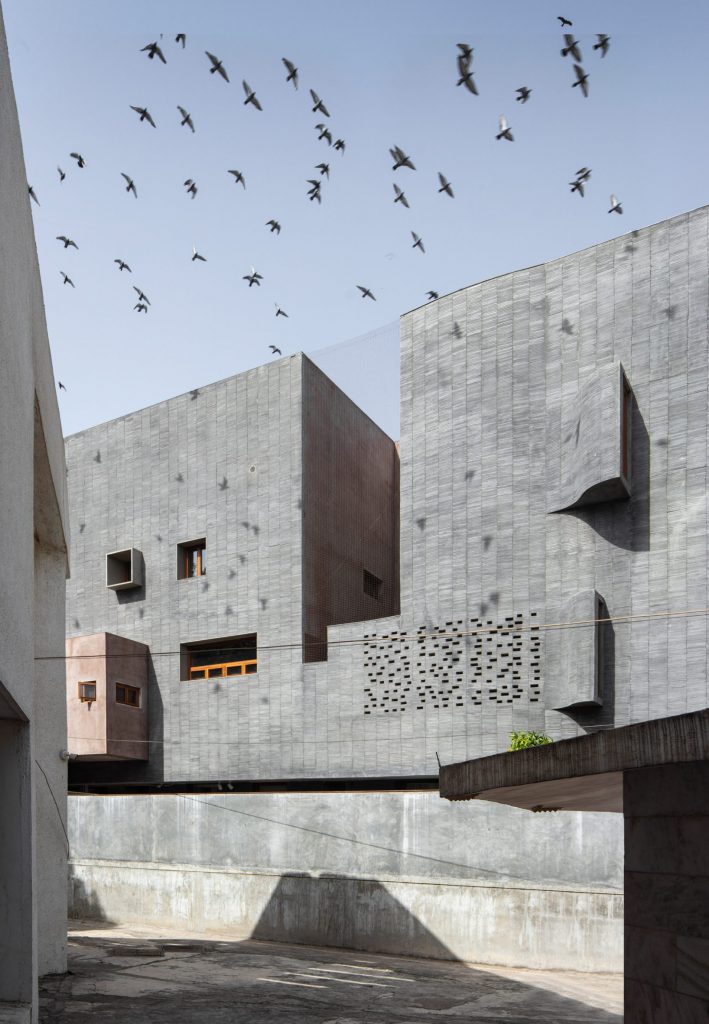
Cool House by Samira Rathod Design Atelier
The house is designed like a box, rather inward-looking with windows and courtyards that start on the first floor and puncture the elongated rectilinear volume. This allows to draw breezes through the building to ventilate the entire house during the hot summer months and diffuse the sharp light. Besides, one of the courtyards contains a shallow pool that cools the warm breezes before they enter the house. A traditional perforated screen called a jali is incorporated into the adjacent wall to filter the light and air that passes through.
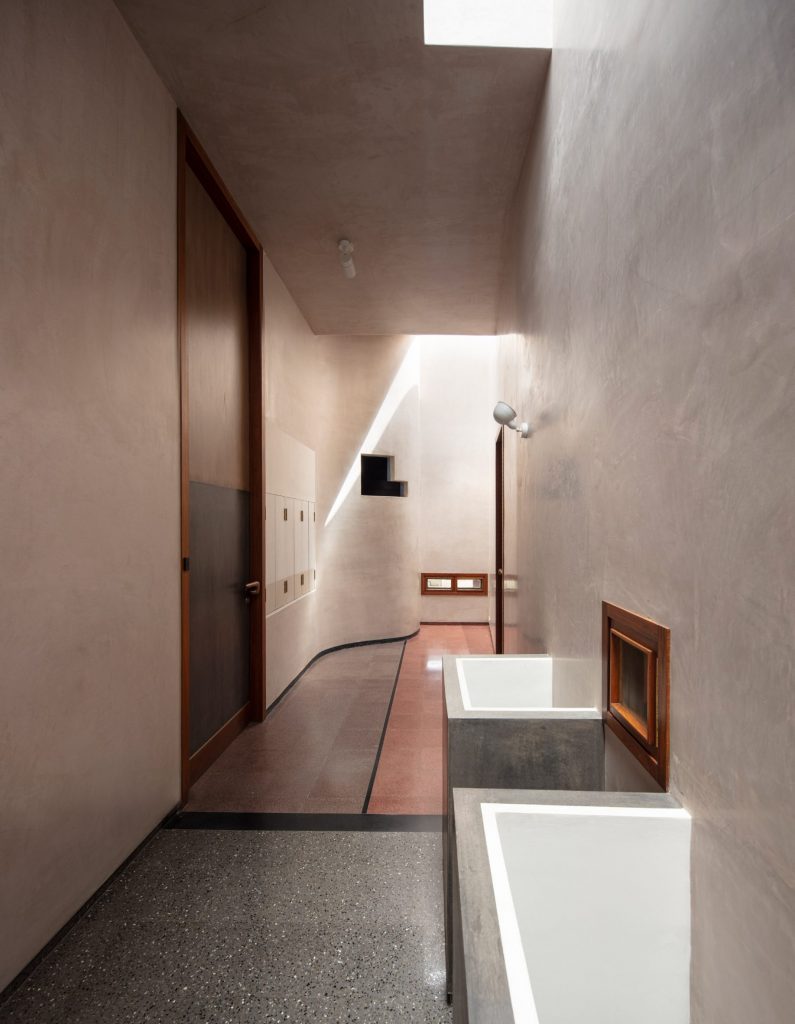
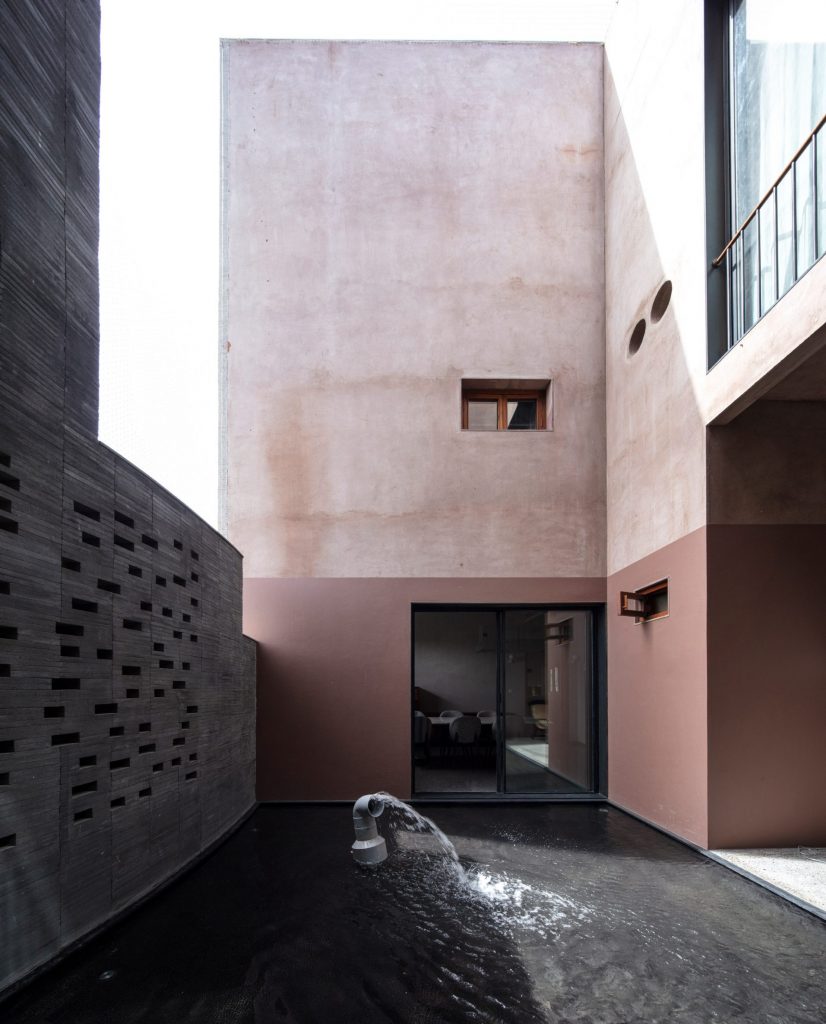
Cool House by Samira Rathod Design Atelier
In another courtyard, situated on the opposite side of the house, there are trees that are placed there to provide one of the courtyards contains a shallow pool that cools the warm breezes before they enter the house. To protect the interior from heat, the external walls are built intentionally thick.
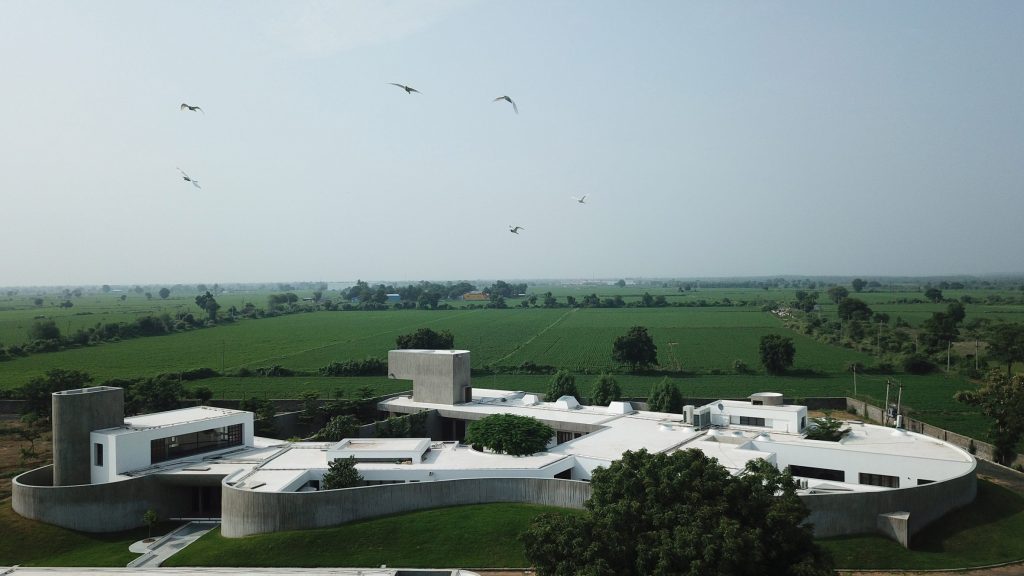
House in Gujarat by Design ni Dukaan (also header image)
Commissioned to build a residential house in Gujarat, India, multidisciplinary studio Design ni Dukaan discovered that the client was absolutely disinterested in how the house would look from the outside. This resulted in an inside-out approach to the design, wherein the experience of space from within took precedence over the external form. The design features undulating enclosing walls as a “second skin” informed by the spaces within.
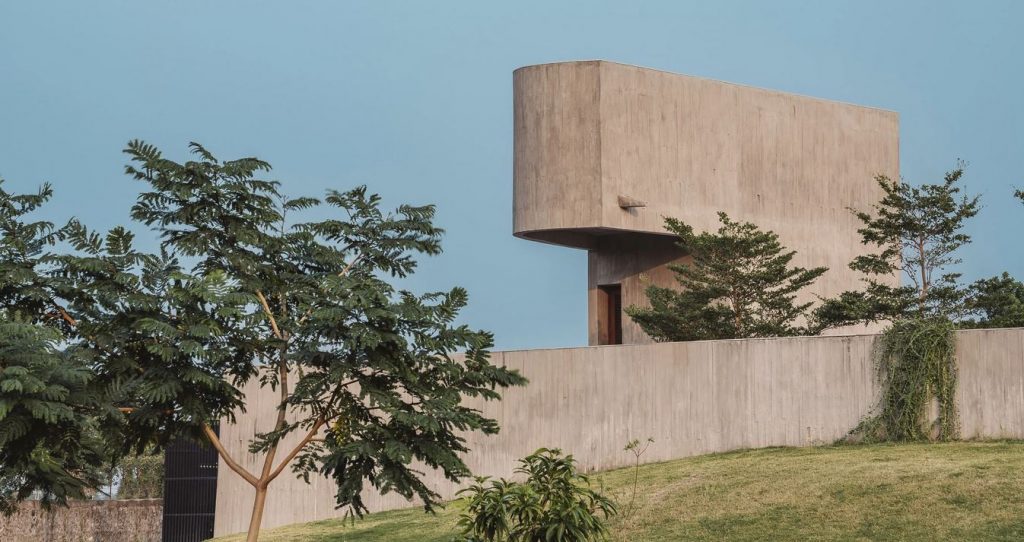
House in Gujarat by Design ni Dukaan
Two concrete walls curve towards a main entrance that is covered by a concrete canopy and leads to a central courtyard space. The kitchen, formal living and dining room, secondary kitchen and dining room, two main bedroom suites and three additional bedroom suites are arranged around this central open space.
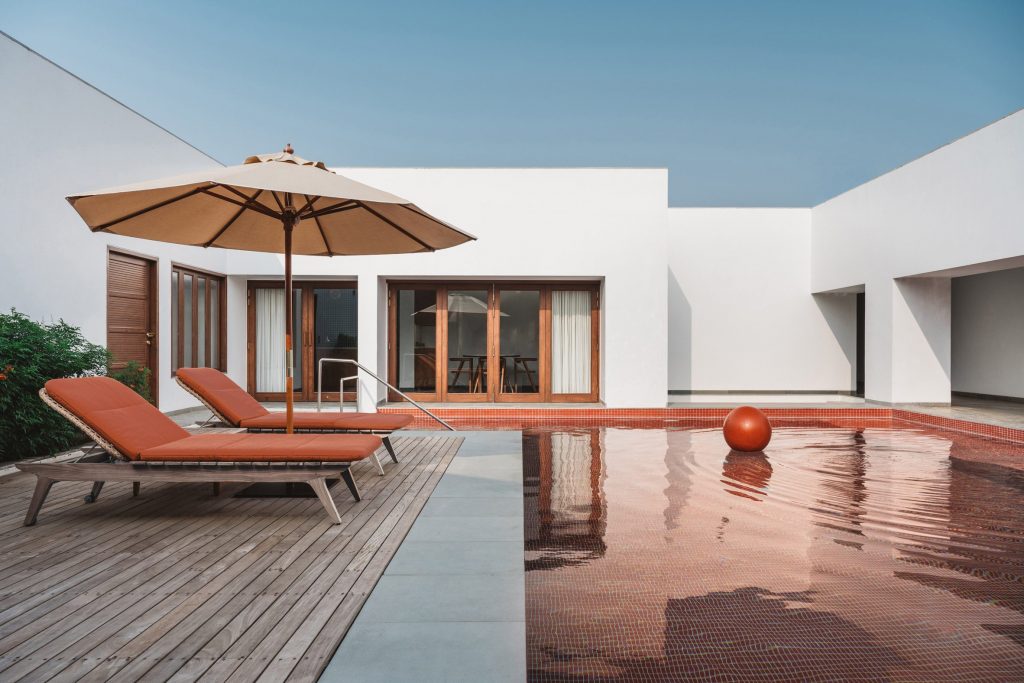
House in Gujarat by Design ni Dukaan
The central courtyard lets natural light into the home, while a covered walkway connects the outdoor courtyard and indoor spaces, protecting the interior from the harsh tropical sun and hot winds. An outdoor swimming pool also helps to cool the courtyard during hot summers. Vegetation growing over the backdrop of grey concrete makes the boundaries between inside and outside dissolve. A material palette of textured concrete, white-plastered walls, and Kota stone further merge indoor and outdoor spaces.
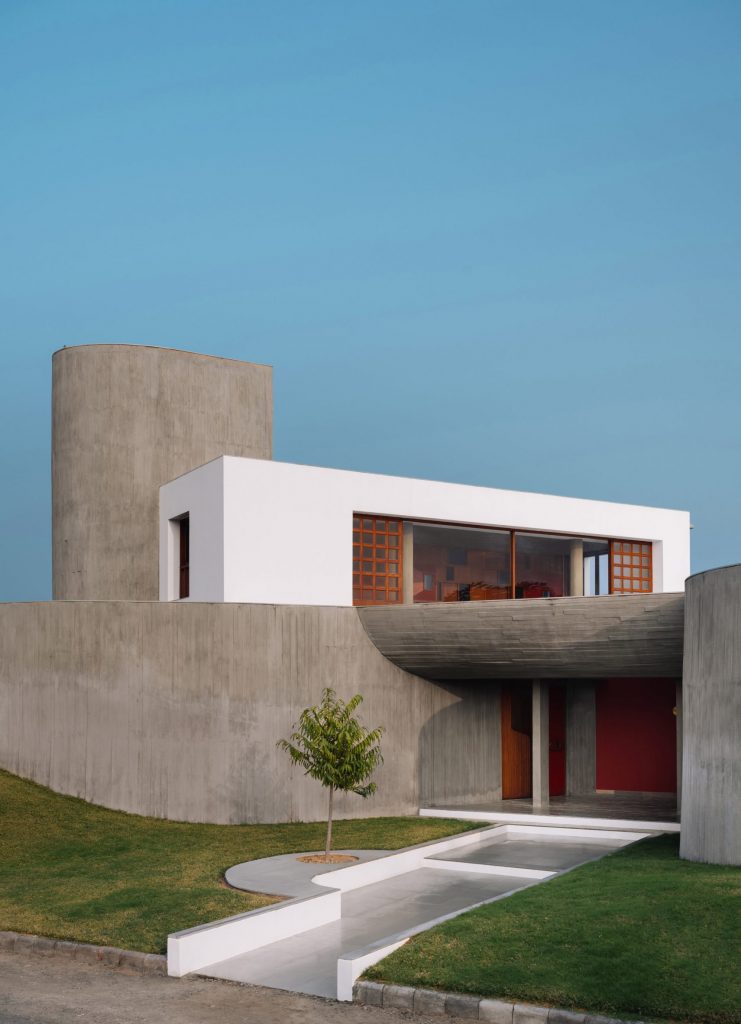
House in Gujarat by Design ni Dukaan
Arranged throughout the home are “frames,” including a swing seat placed by a large opening that overlooks the courtyard. At three points in the home, volumes rise above the height of the enclosing wall to second-floor level and accommodate an artist’s loft, attic room for the family’s grandson and a water tank. Those are designed to look like “three sentinels in conversation, floating above a seamless sea of green once the vegetation had reclaimed the concrete.”
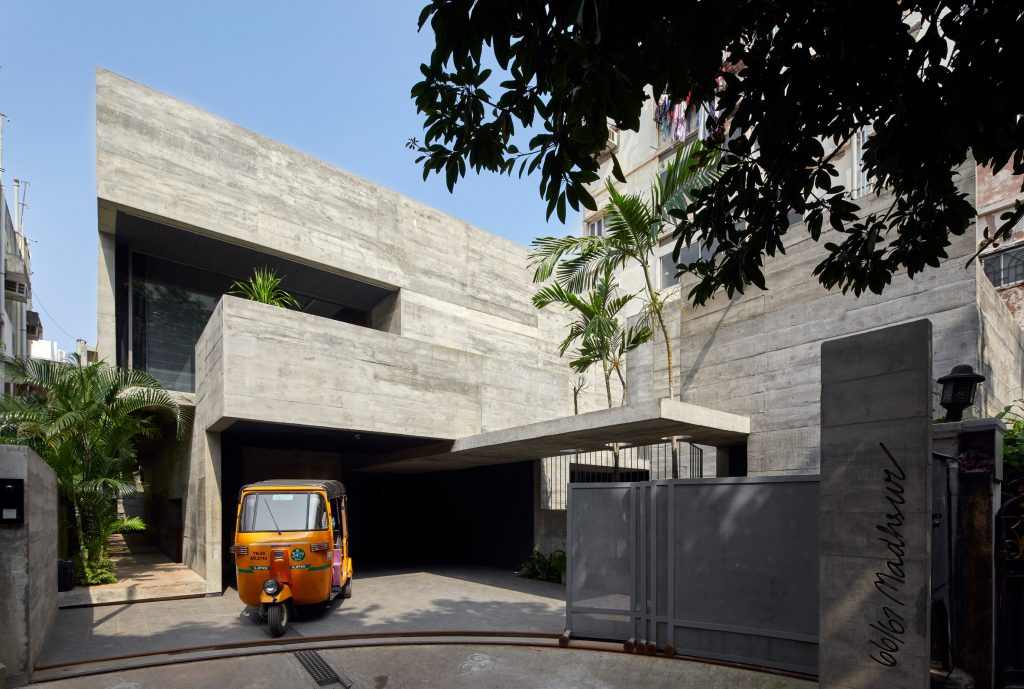
Cut Bend Fold Play by Matharoo Associates
Cut Bend Fold Play, a concrete home in Chennai designed by local studio Matharoo Associates, also draws on the courtyard typology typical to the area. Externally, the house comprises a pared down “hollow shell” of board-marked concrete, which wraps around internal courtyards and layered spaces that bring a feeling of spaciousness to its compact urban site measuring 12.5 by 31 metres.
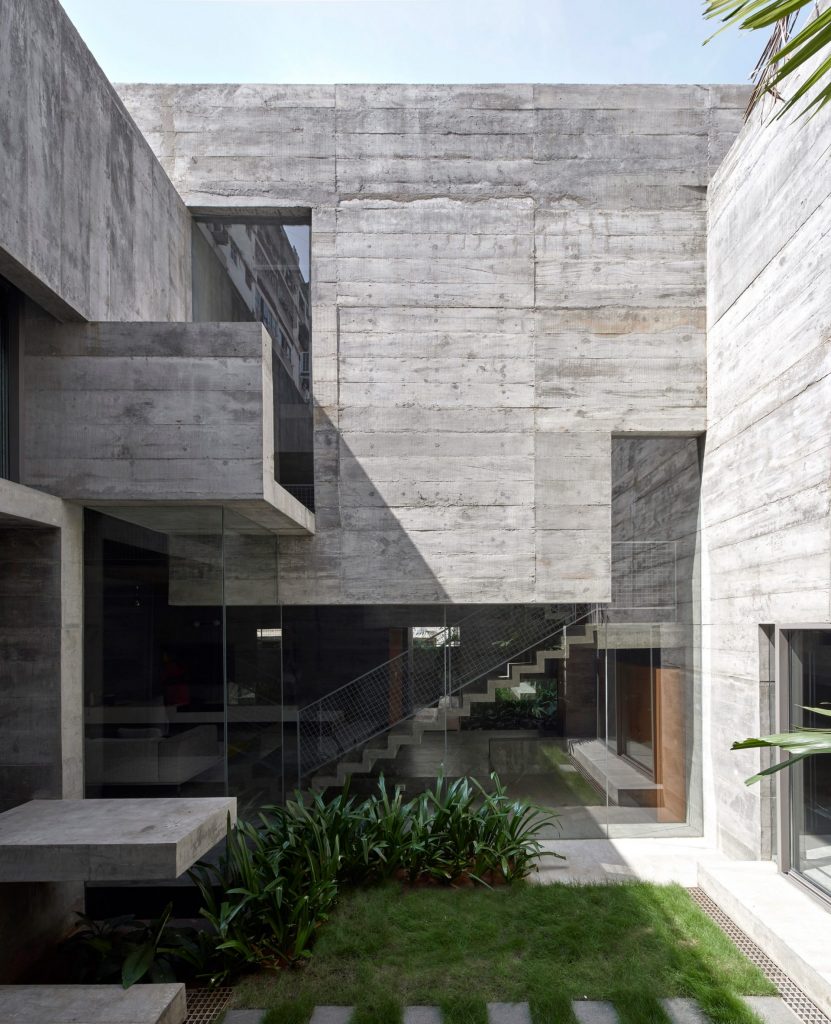
Cut Bend Fold Play by Matharoo Associates
Large voids are carved out from within, bringing in ample light, air and greenery. The largest of these is positioned at the heart of the house and seamlessly extends indoors at ground level – an open flexible floor plate of the home’s living areas.The architects also incorporated into the design principles of Vastu, a traditional Indian system of architecture that dictates the layout and orientation of interior spaces.
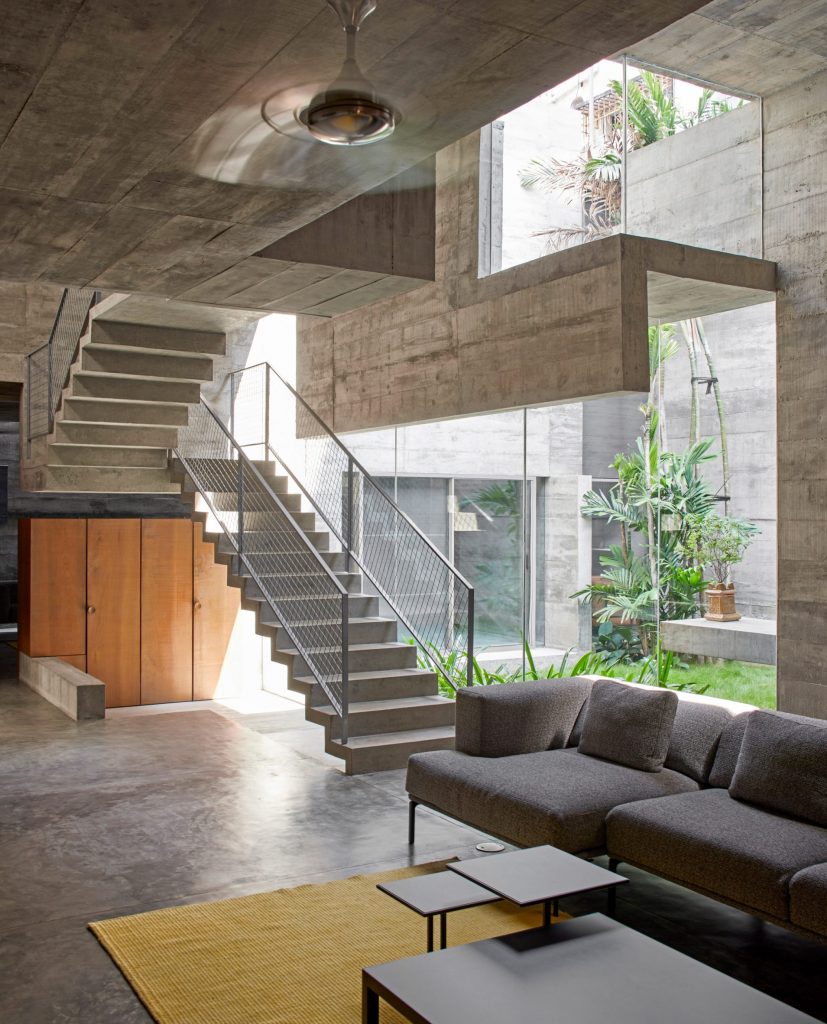
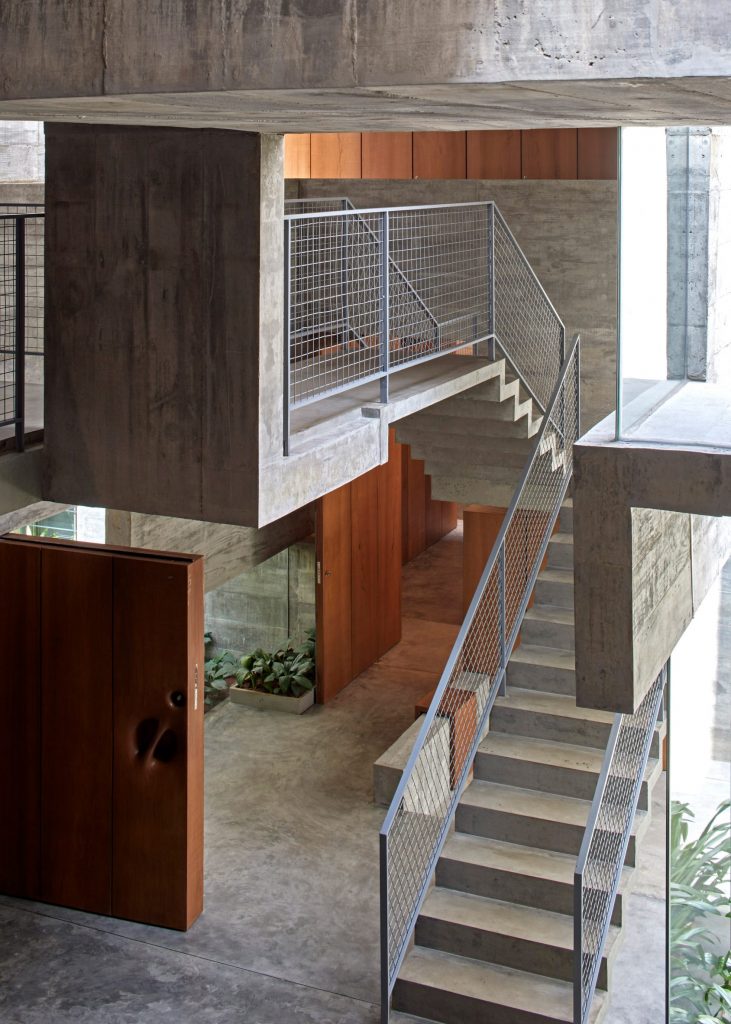
Cut Bend Fold Play by Matharoo Associates
The house is accessed via a narrow side passage along its edge, which opens into the double-height lounge and dining space connecting to the courtyard through sliding glass doors. The concrete walls, floor plate and staircase “fold” and “bend” around one another, creating openings that give glimpses of the courtyards as well as overhangs and balustrades. With the ground floor almost completely free of columns, the structure is mostly suspended from above and treated as a continuous concrete plane in three dimensions that encloses and connects the house in a seamless continuum of space.